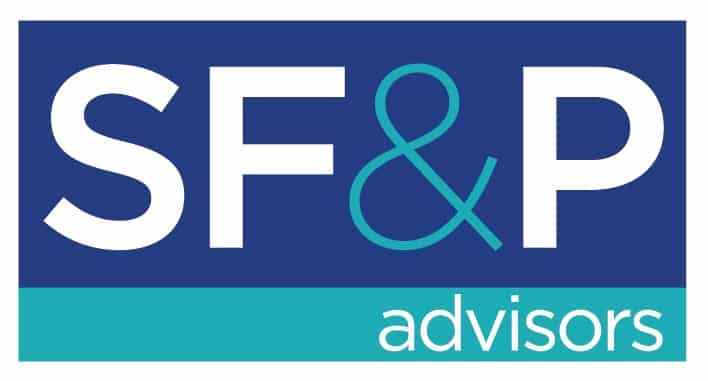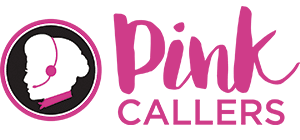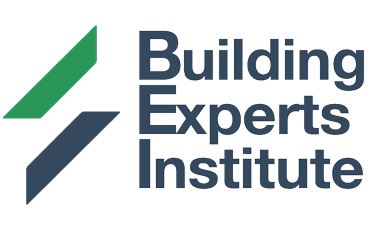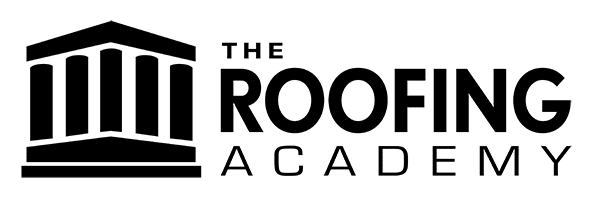In today’s fast-paced digital world, businesses need innovative ways to connect with potential customers and drive growth. Online advertising has emerged as a powerful tool for achieving just that.
But how can you maximize your online advertising strategies to ensure your business stays ahead of the competition?
Grab a cup of coffee and join us on this journey as we explore the ins and outs of online advertising in 2024, delving into various platforms, channels, and best practices that will help you unlock the full potential of your advertising campaigns.
Short Summary
-
Online advertising is an essential tool for driving business growth and reaching a larger audience.
-
Successful online campaigns require comprehensive marketing strategies, ad creatives, targeting & segmentation techniques, tracking & analytics tools as well as effective banner ads & display advertising strategies.
-
A/B testing can be used to maximize ROI by optimizing landing pages and conversion rates through targeted keywords in paid search campaigns.
Understanding Online Advertising
![]()
Online advertising has revolutionized the way businesses reach their target audience, identify new customers, and diversify their income sources through targeted ads. With the rise of social media platforms, search engines, and other digital channels, online advertising has become an invaluable asset in the arsenal of businesses of all sizes.
It enables them to tap into the ever-growing pool of internet users and drive website traffic. This has been a game-changer for businesses, allowing them to reach a much wider audience and increase their visibility. It has also opened up new opportunities for businesses to monetize their content and services, as well as to monetize their content and services.
Online Ads vs Traditional Ads
Traditional advertising methods, such as billboards, print ads, and TV commercials, might still hold their ground, but online advertising offers unique benefits that are hard to ignore. Unlike traditional ads, online ads allow for precise targeting of specific demographics, including gender, generation, or geographic area. Moreover, online ads are interactive, empowering users to take action, such as clicking and visiting the website.
The world of online ads is vast and varied, with text-based ads and visual advertisements such as banners being the most common types. Paid Search Advertising, for example, enables organizations to bid for top search placements on Search Engine Results Pages (SERPs). The return on investment for Pay-Per-Click (PPC) advertising, which includes the Google Display Network, can be as high as 200%. Native advertising, another form of online advertising, is designed to appear as an integrated promotion within content, rather than a conventional advertisement, like in-stream video ads.
The Role of Internet Advertising in Business Growth
Internet advertising, including targeted advertising, has the potential to supercharge business growth by raising brand recognition, acquiring new customers, and boosting sales. By providing potential customers with ads that are pertinent to their interests, online advertising can assist businesses in acquiring new customers. Furthermore, internet advertising can help businesses augment brand recognition by extending their reach to a broader audience and increasing visibility for their products and services.
Advertising on social media platforms offers several advantages for businesses. You can target your desired customers with appropriate ads, expand your reach, and track the performance of your ad campaigns with analytics tools. Leveraging the power of social media advertising is a crucial component of a successful marketing strategy in today’s digital landscape.
Key Components of Successful Online Advertising Campaigns
A successful online advertising campaign requires a comprehensive marketing strategy that outlines the goals, objectives, and strategies for achieving them. One of the most critical aspects of any campaign is identifying a well-defined target audience based on demographics, interests, and behaviors. By tailoring ads to the target audience and accurately reflecting the brand’s values and message, you can create authentic and personalized ads that resonate with potential customers and drive results.
Another essential element in the success of your online advertising campaign is the ongoing optimization of your ads and landing pages. A/B testing can be an invaluable tool for this purpose, enabling you to test different versions of ads and landing pages to determine which ones are most effective for your campaigns.
Ad Creatives
Ad creatives, such as banners, videos, and audio ads, are the lifeblood of digital advertising campaigns. They play a crucial role in attracting attention, communicating a message, or converting viewers into customers. Ad creatives can contain visually pleasing verbal, visual, or sound elements and are essential for developing brand recognition and meaningful connections with customers.
To ensure a successful online advertising campaign, it is important to create ads that are tailored to the target audience and accurately reflect the brand’s values and message. Different ads can include images for visual appeal, videos for storytelling, audio for emotional connections, and text to communicate a clear message.
Effective ad creatives can be seen in ads that utilize images to generate visual interest, incorporate videos to narrate stories, leverage audio to establish an emotional connection, and utilize text to convey a concise message.
Targeting and Segmentation
Targeting and segmentation in online advertising involve dividing the audience into distinct groups based on certain criteria, such as demographics and media use, to better tailor the message, pricing, and product for a more targeted approach. This is achieved through the segmentation, targeting, and positioning (STP) process. By creating more relevant and personalized ads that cater to the specific needs and preferences of the target audience, you can enhance the effectiveness of the ads and the overall conversion rate.
Various types of targeting and segmentation are available, such as demographic, geographic, psychographic, behavioral, and contextual targeting. For example, a company might target individuals within a certain age range with a specific product or target those in a certain geographic area with a specific message. Additionally, they may target individuals with particular interests or behaviors with a specific advertisement.
Tracking and Analytics
Tracking and analytics are imperative for understanding the effectiveness of online advertising campaigns. By analyzing data, marketers can pinpoint areas of potential enhancement and fine-tune their campaigns for optimal outcomes. Collecting and analyzing data allows you to measure the performance of online advertising campaigns and use this information to optimize the effectiveness of the ads and identify potential new opportunities for advertising initiatives.
One specific type of tracking in online advertising is call tracking, which is a method of monitoring phone calls generated from online advertising initiatives. By employing tracking and analytics, businesses can gain valuable insights into their campaigns’ performance and make data-driven decisions to refine their strategies and maximize their return on investment.
Popular Online Advertising Platforms and Channels

The most widely utilized online advertising channels include search engine marketing (SEM), social media advertising, display advertising, video ads, in-stream video advertising, and LinkedIn ads. Each channel offers unique features and benefits for businesses, enabling them to reach their target audience and achieve their marketing goals.
In today’s competitive landscape, it’s essential for businesses to leverage multiple online advertising platforms and channels to maximize their reach and effectiveness. By understanding the nuances of each platform and channel, businesses can tailor their advertising strategies to ensure they resonate with their target audience and drive desired results.
Google Ads and Search Advertising
Search ads are a powerful tool for businesses looking to increase their visibility and drive traffic to their websites. Google Ads is the leading platform for paid search advertising, allowing businesses to bid for top search placements on Search Engine Results Pages (SERPs). These ads can help businesses increase brand awareness, generate clicks, and achieve conversions without relying on organic search benefits.
While Google searches, it seems like a good company. Ads is the most popular search advertising platform, Bing and Yahoo also offer advertising options for businesses looking to diversify their advertising spend and reach different audiences. By testing out campaigns and monitoring the cost per customer acquisition for each platform, businesses can decide which ad space is more effective for their specific needs.
Social Media Advertising
Social media platforms such as Facebook, Instagram, LinkedIn, and Twitter offer powerful advertising options for businesses looking to reach specific audiences and drive engagement. These platforms enable businesses to create visually appealing ads that combine text and display components, making them ideal for capturing user attention and driving engagement.
Facebook and Instagram, for example, offer a wide range of ad formats, such as video ads, in-feed ads, and ads in the Explore Tab, allowing businesses to tailor their campaigns to their specific objectives and target audience. Twitter ads, on the other hand, are particularly effective for reaching young demographics such as millennials and Gen-Z, with Promoted Tweets, Promoted Accounts, and Promoted Trends.
By leveraging the unique features of each social media platform, businesses can create highly targeted advertising campaigns that resonate with their audience and drive desired results.
Video Ads and In-Stream Video Advertising
As video content continues to grow in popularity, video ads and in-stream video advertising have become increasingly important for businesses looking to capture user attention and drive engagement. Platforms like YouTube and TikTok offer unique opportunities for businesses to leverage video ads as part of their advertising strategy.
YouTube ads, for example, can help businesses achieve a variety of campaign objectives, such as sales, leads, website traffic, brand awareness or reach, and product or brand consideration. TikTok, on the other hand, boasts one of the highest engagement rates among all social media platforms, making it a desirable platform for advertising. To succeed on TikTok, it is essential to create entertaining and imaginative content that viewers will appreciate.
By leveraging the power of video ads and in-stream video advertising, businesses can drive higher engagement rates and achieve better results from their online advertising campaigns.
Effective Banner Ads and Display Advertising Strategies
Banner ads and display advertising are forms of online advertising that utilize visuals, such as images, videos, and animations, to market products and services. When executed effectively, these ads can be highly impactful, capturing user attention and driving conversions.
To create eye-catching banner ads and display advertising campaigns, businesses need to follow best practices and tips for designing visually appealing visuals. This includes using bright colors, high-quality images, and concise text, as well as ensuring the visuals are relevant to the product or service being advertised for maximum impact.
Design Principles for Banner Ads
Creating visually appealing and effective banner ads requires adherence to certain design principles, such as simplicity, visually appealing imagery, a clear call-to-action, and adherence to design standards. A successful banner advertisement should be attention-grabbing, concise, and tightly focused, and may include animation, GIFs, or video.
When designing banner ads, it is essential to ensure the message is easily understandable and succinct. Utilizing jargon-free and easily comprehensible language, avoiding overly technical language, and incorporating visually pleasing elements, such as bright colors, bold fonts, and interesting images, can help create banner ads that resonate with users and drive engagement.
Retargeting with Display Ads
Retargeting with display ads is a powerful technique for improving ad performance and conversion rates by reconnecting with users who have already interacted with your website or ads. By targeting users who have already demonstrated an interest in your product or service, you can increase the likelihood of them taking the desired action.
To ensure effective retargeting with display ads, it is essential to create ads that are relevant to the user. This can be achieved by segmenting users based on their interests and past engagements with your website or ads. Additionally, it is important to ensure that the ads are visually attractive and that the messaging is succinct and comprehensible.
Mastering LinkedIn Ads for B2B Marketing
LinkedIn is a social networking site. Ads is a professional social media platform that offers great potential for B2B businesses in terms of product and service promotion. It can prove to be highly beneficial for many such businesses. With various ad formats and targeting options available, businesses can leverage LinkedIn ads to maximize results and reach their desired audience.
By understanding the intricacies of LinkedIn ads and employing best practices, businesses can effectively target B2B audiences and maximize the potential of their advertising campaigns on this professional platform.
LinkedIn Ad Formats
LinkedIn supports a variety of ad formats, including single image, carousel, video, event, and document sponsored content, as well as Text and Dynamic Ads, Spotlight Ads, and Follower Ads. Each ad format offers unique benefits, such as single image ads for brand awareness, carousel ads for displaying multiple products, video ads for storytelling, event ads for promoting events, and document ads for lead generation.
Understanding the benefits and use cases for each LinkedIn ad format can help businesses create more effective advertising campaigns that resonate with their target audience and drive desired results.
Targeting Strategies for LinkedIn Ads
Linkedin offers a variety of targeting criteria, such as job title, job function, and industry, to ensure that your message is reaching the right audience. In addition to these audience attributes, LinkedIn provides custom targeting capabilities that enable advertisers to reach users based on their unique identifiers, such as email address or phone number.
By leveraging LinkedIn’s extensive targeting options and strategies, businesses can create highly targeted advertising campaigns that resonate with their B2B audience and drive results.
Boosting Conversions with Paid Search and Landing Pages

The relationship between paid search campaigns and landing pages is crucial for driving conversions and achieving the desired return on investment. By optimizing landing pages and utilizing targeted keywords and negative keywords in paid ads, businesses can effectively increase their conversion rates and maximize their online advertising strategies.
To ensure maximum conversions, businesses need to design and optimize their landing pages in a way that complements their paid search ads and drives users to take the desired action, such as purchasing a product or completing a form.
Optimizing Landing Pages for Paid Search
Optimizing landing pages for paid search requires creating pages that captivate the intended audience, utilizing succinct messaging, optimizing for particular keywords, incorporating scarcity, and providing a pertinent call to action.
To create pages that engage the target audience, focus on producing content relevant to the user, incorporate visuals to draw attention, and ensure the page is easy to navigate. Utilizing clear and concise messaging, as well as optimizing for specific keywords, can further enhance the effectiveness of your landing pages. Additionally, it is essential to continuously test and optimize the user experience to ensure maximum conversions.
A/B Testing for Conversion Rate Optimization
A/B testing is a powerful tool for refining landing pages and improving overall conversion rates. By comparing two or more versions of a webpage or app, businesses can identify which version yields better conversion rates and optimize their online advertising campaigns accordingly.
Some examples of A/B testing include testing different versions of a landing page to assess which one yields more conversions, assessing different versions of an app to determine which one is more user-friendly, and evaluating different versions of an ad to identify which one is more effective.
By leveraging A/B testing, businesses can make data-driven decisions to refine their strategies and maximize their return on investment.
Summary
In conclusion, maximizing your online advertising strategies in 2024 requires a deep understanding of various platforms and channels, effective targeting and segmentation, compelling ads creatives, and continuous optimization of your campaigns.
By leveraging the power of platforms like Google Ads, social media, and LinkedIn, as well as optimizing your landing pages and employing A/B testing, your business can achieve impressive results and stay ahead of the competition. Remember, the key to success in online advertising lies in staying adaptable, staying informed, and never ceasing to experiment.
Boost Your Brand’s Online Presence with Hook Agency’s Powerful Online Advertising Solutions!
Are you ready to make a splash in the digital world?
Look no further than Hook Agency, your trusted partner in online advertising. With our expertise and data-driven strategies, we’ll help you reel in more leads, increase brand visibility, and drive conversions like never before.
Contact Hook Agency today to get a free quote and discuss your advertising goals and let us create a winning strategy for your brand.
Frequently Asked Questions
What is online advertising with example?
Online advertising is a form of marketing used to promote brands, products or services on digital channels such as websites, apps, and social media. Examples include display ads, banner ads, search engine results pages, social networking ads, email spam, online classifieds, pop-ups, contextual ads, and spyware.
What’s the purpose of online advertising?
The purpose of online advertising is to create brand awareness and generate leads for businesses. By placing ads in the right digital channels, companies can attract potential customers to their products or services.
The goal of online advertising is to effectively promote a business or product by increasing visibility and creating an engaging experience for users. Through strategic targeting, advertisers can reach their target market more efficiently and cost-effectively.
What are the most widely utilized online advertising channels?
The most popular online advertising channels are search engine marketing (SEM), social media ads, display ads, video ads, in-stream video advertising, and LinkedIn ads.
These are the leading channels businesses use to increase brand visibility, maximize ROI, and generate leads.
How can I optimize my landing pages for paid search?
To optimize your landing pages for paid search, make sure you include the right keywords, have an effective headline and clear call to action, create persuasive content, focus on mobile optimization, and leverage scarcity.
Creating persuasive content is key to optimizing your landing pages. Make sure your headline is effective and your call to action is clear. Additionally, focus on mobile optimization and leverage scarcity to increase conversions.
















